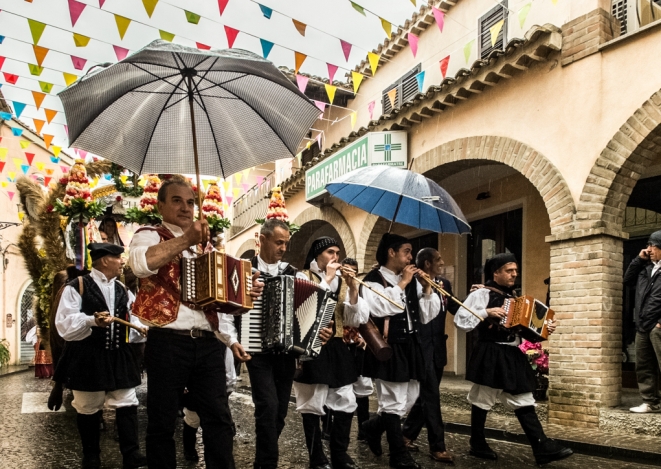The launeddas: the Sardinian instrument par excellence
About the launeddas people wrote a lot, but certainty concerns the discovery of a Sardinian bronze statuette, in the territory of Ittiri, near Sassari. This bronze statuette comes from Eighth-Ninth Century B.C. and represents a hermaphroditic figure who is seated and plays an instrument similar to the launeddas. This proves that in that period there have already been a phonic device which belonged to this kind of musical instruments. The launeddas, called "triple mass clarinet", were fundamental means for accompanying the days of people who had a country life.
The framework is made up by three calamus or tubes of reed: the first is called "Tumbu" and gives the main note to the instrument. "Sa Mancosa Manna" is linked to this tube through a pitchy cord and it has the role of accompaniment. It has four digital holes, "is crais" and another hole, called "arrefinu", that blends in a melody with the tonic of "su Tumbu". The union of these two calamus creates "sa loba" and both are supported by the left hand. The third calamus is called "sa Mancosedda" and it is the smallest reed. It has four digital holes and another very important, that has the role of range, in a melody with the tonic of "su Tumbu". "Sa Mancosedda" has the function of soloist and for it you must use the right hand.

The calamus are linked through binding of support. At the top there are other tubes where, previously, a section of tube has been removed in three sides, after having made an incision. After correct works, there is the phase of the creation of a "simple driving reed". The sound comes from it. Each calamus has a tube-reed. Each reed is linked to the instrument that you want to build and to the tonality that you want to have, in a perfect relation between diameter and length.
The reeds are made heavier through short and calibrated portions of beeswax, that has the function of regulating the vibrations and guaranteeing a perfect tuning of the whole instrument. There are different kinds of reeds: for "su tumbu" there is the "Arundo donax" and for "sa mancosa" and sa "mancosedda" there is the "Arundo pliniana". For the "tubes-reed" you can use the "Arundo donax" too, but with a small diameter. The reeds are emptied and pierced through specific tips for guaranteeing continuity to the hole.
The tips are shaped by the builder like he wants. The launeddas are played thanks to a technique of a particolar breath, called "circular breathing" or "continuous breath"; thanks to this technique there is always a continuous sound, without breaks during the musical execution.

The utensils that are used for the construction of the launeddas are: tips with different diameter and knifes and blades with different shape. The raw materials are the reeds with different diameter, beeswax and a pitchy cord, that allows the resistance to humidity.
There are various categories of launeddas, called also "Sonus de Canna". The kinds that are the main and the most used are Mediana, su Fiorassiu, su Punt’é Organu, su Spinellu, that are easy to multiply with the various tonality that you want to realize. The disposition of the notes in the melodic reeds makes different chords for each type of instrument.
The Launeddas represent the main instrument of Sardinian music and they are used during the processions, as an accompaniment of sacred and profane songs and of traditional dances through sounds of pure virtuosity. Once, every Sunday people gathered and enjoyed dancing, lead by the sound of this instrument. Nowadays, people are using it with a role of niche, although there is again a big recovery. The main use is in the processions. Each instrument has its particular sounds and each types of launeddas are different thanks to this theory.